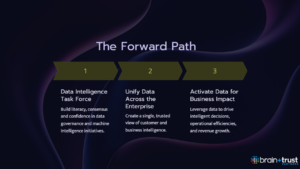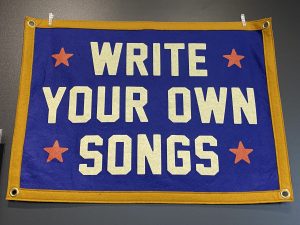A most interesting exchange happened just last week. A digital capability provider that deals with search optimization asked me to fill out a form (not even a form, it’s a MS Word document) describing a potential client’s business. The reason: The capability provider needed to determine whether that potential business should be handled by the capability provider’s B2C or the B2B team.
For me the question was even simpler: “Why does this matter?” The notions of B2C and B2B being different is very dated. This distinction used to matter because the two types of commerce happened in different channels. But it doesn’t anymore. If the distinction this capability provider makes is a purely internal one, then it’s even more curious to me because it runs counter to how people behave.
The difference between the two channels is nothing more than a question of managing scale vs. volume. It’s valuable to know why treating these channels differently is truly a vestige of the past, and how we got here, so as a marketer you can address your unique commerce opportunities from the proper angle.
To get there, we start in an unlikely place.
White Pages or Yellow Pages?
Hopefully many of you reading this won’t even know what a phone book is, or that it was made up of white and yellow pages. However, I’m equally sure that many of you are of a vintage that will recognize the reference. I’ll keep this quick: In its most enduring format the phone book had listings—predominantly of people—alphabetized by last name, and printed on white pages. The yellow pages were reserved for businesses, organized in alphabetical order by business type. Thus, people who were looking for someone went to a different place to search than people who were looking for something.
Last time I checked Google, or Bing, or Bai Du or Yamlii, there isn’t a white and yellow page-level difference between searching for a business or a person. Or an event. Or a fact. Or a product. Or an image. Because the data that defines everything and everyone is so vast and unstructured, search is best broken down to its simplest point of entry: Just tell me what you want and I’ll find it for you.
This approach explains why Amazon’s entry into the B2B distributor business has been so explosive: They are basically applying consumer-level shopping methodology to items that are designed—or at least formatted—uniquely for business users. Just search for it by name, and you will be presented with all your options.
With all this in mind, why would a company that delivers search optimization capabilities differentiate between a consumer-focused client and a business-focused client? Search works the same way for each. No matter what people are shopping for, the ways they consume the information they need to make a decision are the same. There’s no reason to treat them differently, and doing so potentially compromises the overall consumer experience.
Same-Same…But Different?
For sure there are pure B2B businesses: aircraft engines, medical equipment, laser sights for armaments, etc. A senior technician for Lufthansa certainly won’t need to Google the name of a company that can service a GE 90 engine on a Boeing 777. But if you were to Google this you would find exactly what you needed close to where you are. Google senses where you are (in the markets they serve) and will deliver the nearest company that can handle this rather arcane request. No need for a specialized listing or a separate book that only has this kind of information.
What resides at the heart of the matter is that people will embrace the shortest, most friction-free way of getting something done. If a few clicks in a browser can do the job of getting up and going to the shelf to pull down a 3-ring binder, then leafing through the pages to find what you think you need, then the browser will win every time.
This comes complete with the added bonus of the accidental discovery of additional information—add-on intelligence—that attends an online search. Where a phone book either tells you who else has that same name or—in the yellow pages—which other plumbers also serve your area, an online search enables users to follow a thread from their inquiry to perhaps discover a lot more than what they were originally seeking.
“Thanks, Captain Obvious, I already knew all this,” you may be saying. And that’s my point: people’s digitally driven searching behaviors are already second-nature. Whether you’re in a personal or a business context, you apply them the same way.
B2P
The upshot is that, while each of us operates in different contexts over the course of a day, the ways we satisfy our need for information have consolidated to be managed through one species of devices: internet-connected devices. This behavior evolution is why Amazon has moved so forcefully into the B2B market. There was no need for them to acquire an incumbent player in B2B because, while the distinction between B2C and B2B has historically been one of business model and buyer behaviors, today the models and the behaviors are indistinct between the two.
The world of B2B doesn’t get enough credit for the ways its approaches have helped redefine the B2C customer experience. In B2B, companies negotiated discount rates and service levels based on their historical and ongoing relationships. In today’s digitally driven B2C marketplace, creating a user experience based on a historical and ongoing relationship is called personalization and it enables a company to similarly reward a very good customer. The major difference is, this reward need not be pre-negotiated. It can happen in real time, and can be driven by an algorithm: In a B2B context, the role of the algorithm is played by an account manager who will rip throats out and appeal to the highest echelon of the company to find a way to reward (and retain) a strong, consistent customer.
Thus, what are commonly referred to as B2B and B2C need to give way to the notion of B2P: A business serves a person, regardless of what or for whom that person is buying. Toilet paper is toilet paper, whether you need 1 roll or 40,000; it’s up to the system to recognize and reward both types of shoppers accordingly, right?
Wrong. This isn’t a technology issue. It’s a people issue. The first step toward creating a truly B2P enterprise—a business-to-person enterprise—is to put people first, and to align with people’s behaviors. Then, put in place processes that support them, after which the technology will follow.
This sounds simple but it is not intuitive to an experienced marketer. Experienced marketers think in terms of channels because historically marketing has happened through channels and not to individuals. Marketing involved running messaging through any of a few established channels with the right balance of general and specific to attract the highest number of potentially interested people. B2P turns this on its head.
More Lessons from the Phone Company
The parallels between telephony and marketing are striking. In the early days of telephones there were party lines where multiple people occupied the same call and the lines were always connected; you picked up the phone and maybe there was someone on. Then calls were routed through a central switchboard, where one individual asked the operator to connect them to another individual. This model persisted for longer than people realize: The switchboard became a board of mechanized switches, and was activated by a dial tone. Mobile phones have forced this model to adapt to scale but not really change, with the central connection facility being made smaller, more powerful, and more plentiful to handle many, many more individual phones.
Marketing had a similar evolutionary path: at first very few media were available to communicate basic messaging, followed by a slightly larger number of outlets to reach many, many more people. This resulted in advertising space being auctioned at a premium: To this day ads during the Super Bowl command the highest rates because of the volume of viewers. In the classic media model each viewer is treated to the same ad regardless of the viewer’s context, because conventional media channels are set up under the assumption that, if you’re watching the Super Bowl, you fall within a range of relevance to be receptive to the messaging. It’s managing volume, not scale.
How telephony and marketing have each evolved is instructive as we consider a B2P model. Where marketing has historically been about managing volume (How much of the audience can we attract?), telephony was forced by mobile to address the matter of scale: How many discrete units can we accommodate?
The reason why the move from B2B or B2C to B2P is so challenging can be explained like this: Although they both jump an Olympic high-jumper is not at all the same as an Olympic pole-vaulter. When negotiating the changes from managing volume vs. scale, a marketer is required to adapt from being one to being the other.
Fill Out the Form, Tony
Reluctantly I conceded that no progress was going to be made until I completed the Word document. My distaste for process and bureaucracy is my Achilles’s heel, and I need to get over it. But this exercise did make me reflect on the reasons why the B2P approach must drive our thinking and actions as marketers. Aligning behind the notions of scale over volume, and starting with the individual and paying attention to his/her behaviors are the primary (if not only) drivers in cementing a relationship, no matter what you’re selling or why they’re trying to buy.
[/et_pb_text][/et_pb_column][/et_pb_row][/et_pb_section]







Leave a comment